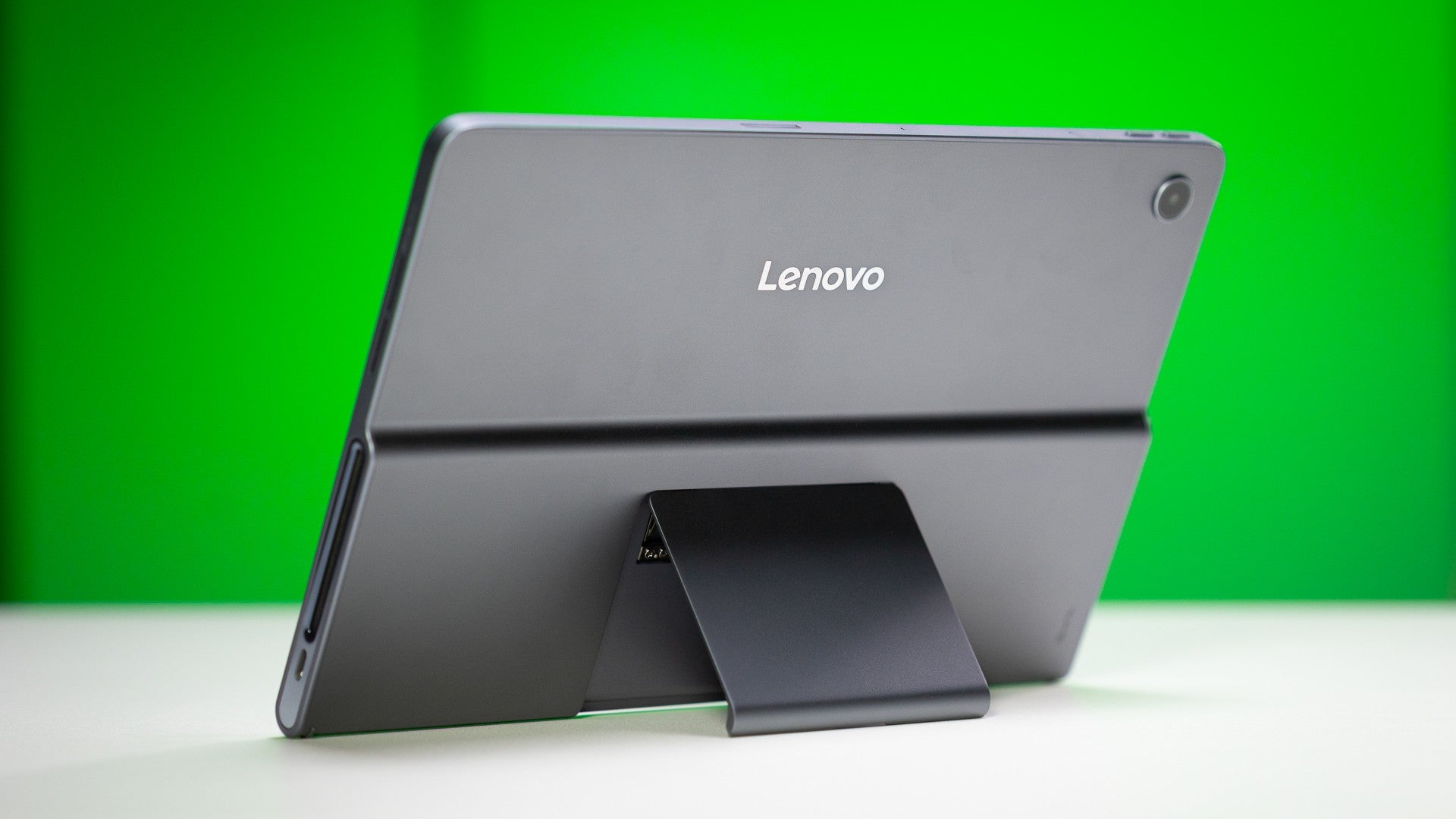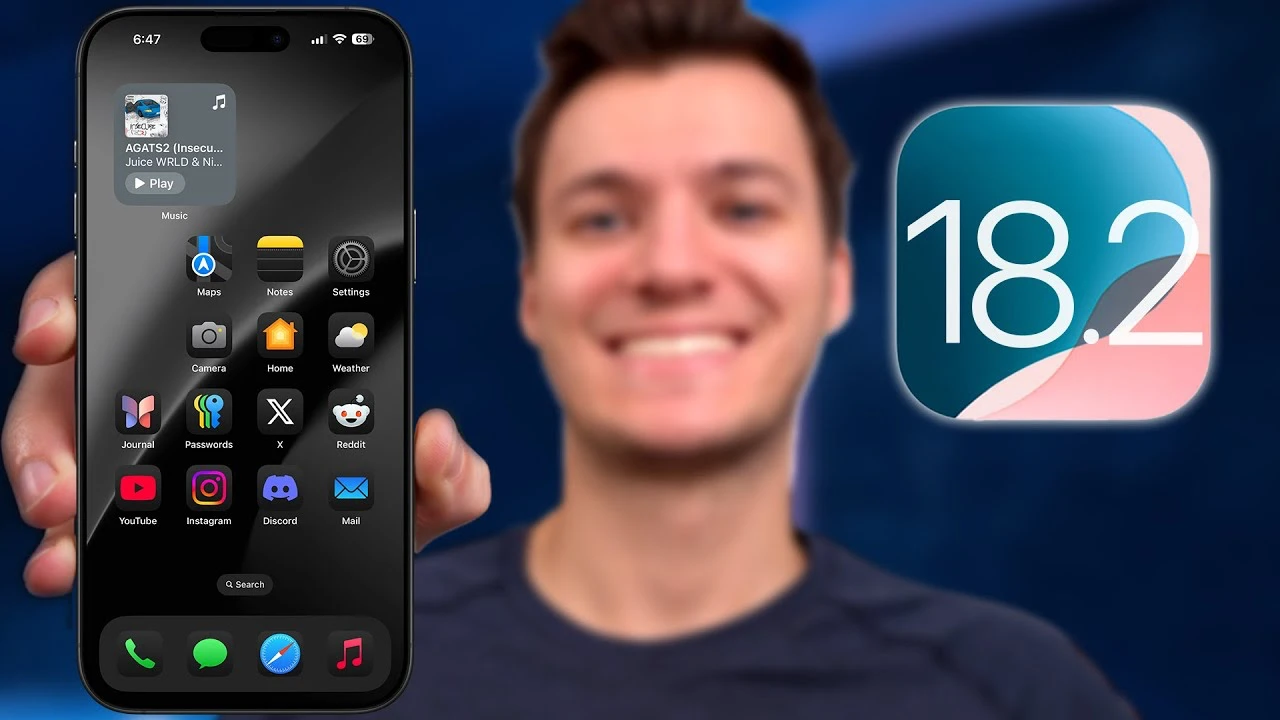Review: The Pro brings a lot of nice premium features like an OLED display and a new chip, but the $500 gulf is too wide for many
Three years after Steve Jobs unveiled the first iPad, sales reached an all-time high. According to Canalys, iPad shipments hit 26 million in the last quarter of 2013. With those numbers, Apple secured more than one-third of the tablet market. As a category, tablets represented a hair under 50% of the entire PC market for the holiday quarter. Two years later, reporters began asking whether we had reached peak iPad.
As we barrel toward 2024’s halfway mark, the question remains. Apple’s tablets haven’t recaptured that high-water mark in the intervening decade plus. In fact, in Q4 2023, iPad shipments came in more than 10 million units shy of their top-selling quarter.
Hence, Apple’s decision to devote a full event to iPad last Tuesday, roughly a month out from WWDC. From the invite artwork to the polarizing ad spot, Apple was clear — the event was all about iPads. Most of the rumors proved true: Apple introduced a new iPad Pro (with a new M4 chip), iPad Air, the Pencil Pro and an upgraded keyboard case.
It’s not just an Apple phenomenon. Interest in tablets is down across the board. Shipments for the final quarter of last year were down 11% for the category as a whole.
The most notable aspect of the whole thing, however, was the M4 launch. For the first time since the company started producing its own desktop silicon, the latest chip wasn’t debuting on a Mac. There were no MacBooks or iMacs to be had. The message was clear: iPads are more than an afterthought.
Not much has changed about the iPad over the years. The form factor, the App Store — much about the product remains familiar. During that time, however, the company has worked to shift the device’s place in its broader ecosystem. At launch, Jobs referred to the iPad as a “third category of device,” after laptop and smartphone. In more recent years, however, the company has increasingly positioned it as a laptop replacement.
Whether the slate can truly fill that role ultimately comes down to the needs of the individual, but the combination of the iPad Pro and Magic Keyboard have made the argument more plausible. While Apple has no interest in cannibalizing notebook sales altogether, giving the Pro an M4 chip ahead of every member of the Mac family certainly makes a statement.
With each passing year, iPads get more MacBook-like, and vice versa. At the very least, the laptop represents a far better target market for the iPad. The ship has sailed on any suggestion that it might come within spitting distance of challenging the iPhone’s dominance.
The 2024 iPad lineup

Here’s where the iPad lineup stands as of May 2024:
- iPad: 10.9-inch display, A14 Bionic chip, starts at $349 (down from $449)
- iPad Mini: 8.3-inch display, A15 Bionic chip, starts at $499
- iPad Air (New): 11- and 13-inch displays, M2 chip, starts at $599 and $799, respectively
- iPad Pro (New): 11- and 13-inch displays, M4 chip, starts at $999 and $1,299, respectively
The lineup encompasses a wide range of performance and prices. Certain lines, however, have only gotten fuzzier. For one thing, the new Pros are actually lighter than the new Airs. Perhaps one day the iPad Air will replace the standard iPad outright, much as the MacBook Air did with the standard MacBook. For now, however, the iPad Pro and iPad Air share a relationship similar to that of the iPhone Pro and standard iPhone.
Here’s what Hardware SVP John Ternus had to say on the matter: “iPad Air is designed to deliver advanced features pioneered on iPad Pro and make them available and even more affordable.” In other words, the Pro is for the early adopter, while the Air is for those who don’t mind waiting a bit for a lower price point. How long that will be, however, is up in the air (so to speak), given the line’s inconsistent refresh cycle.
The high price of Pro

Apple sent us the two new 13-inch iPads for review. These devices sport the largest screen in the whole of the line and are the most premium slates Apple offers. Even so, there’s a large gulf with regard to pricing.
The 13-inch Air starts at $799 for the Wi-Fi model and $949 for 5G cellular. The 13-inch Pro, meanwhile, starts at $1,299 and $1,499, respectively. We’re talking about a $500 price gap between these devices. You can buy a tenth-generation iPad with a cellular connection for the difference in price between the 13-inch Air and Pro. And that’s just for the baseline models.
If you configure a model to match what Apple sent along for review, the damage is $2,200, pre-tax. That’s courtesy of the 1TB of storage — an added $600. If you’re really feeling it, you can opt for a 2TB model, which will run you $1,000 over the base model. You’ll also need to add the aforementioned $200 for cellular connectivity and another $100 for nano-textured glass, which reduces glare from the tablet’s glossy screen.
During the checkout process, Apple notes, “both the standard glass and nano-texture glass options of iPad Pro are engineered for extremely low reflectivity, it helps to consider your work environment when deciding which one is right for you.” Honestly, the $100 premium is less than I would have anticipated. On the Studio Display, the feature adds another $300 to the base price – though, granted, it’s a much larger screen at 27 inches.
The nano-texture glass brings an extra level of tactility to the table. The add-on does not give the Apple Pencil a paper-like experience, but it does add a touch of welcome friction to the otherwise entirely smooth experience.
Something worth considering when pricing this out: the 13-inch M3 MacBook Air starts at $1,099. The 15-inch starts at $1,299. As others have pointed out, we’re firmly in Apple laptop territory when talking price – oh, and for good measure, toss in another $299 for the Magic Keyboard – you’re going to want it if you expect to get any writing done.
As much as I’ve enjoyed using the iPad Pro these past several days, my hard-earned money seems far better invested in a MacBook Air. I write for a living, and I still much prefer doing so on a machine specifically built for it. And as much as Apple has continued building out iPadOS, I’ll still go with MacOS for work 10 times out of 10.
I’ll be the first to admit that the “Pro” distinction for products often means something more along the lines of “premium” or “pricey.” With the iPad, however, the Pro model does feel exclusively tailored to professionals. Pricing is part of that, certainly, but the really high-end feature set is absolutely designed for creative pros who absolutely need these features for work – things that a majority of users really don’t require.
When is an Air not an Air?

More confusing is the “Air” distinction. While I appreciate that Apple deems it necessary to distinguish the brand for the standard iPad, the mind reels at the fact that it’s thicker and heavier than the Pro. The 13-inch Pro is 5.1mm thick to the Air’s 6.1mm, while weighing 1.28 pounds to the Air’s 1.36 pounds. It’s not a huge difference, but portability is kind of the whole reason the “Air” distinction exists in the first place.
I’m sure a lot of very heated discussions were had behind closed doors at One Apple Park. Good branding is a key pillar to Apple’s decades-long success and this one’s a bit of a headscratcher.
The 13-inch Pro and Air have the same 264 ppi pixel density as the 10-inch iPad. There’s a slight difference in resolution, with the Pro sporting 2752 x 2064 to the Air’s 2732 x 2048. There’s a key difference, however, in the underlying tech. Apple’s new Ultra Retina XDR is powered by a “tandem OLED” set up, which uses a pair of OLED panels (right here the price gap starts making a bit more sense). Stacking the panels up gets the system to 1,000 nits of brightness and a peak of 1,600 nits when look at HDR.
Apple elaborates, “Tandem OLED technology enables sub-millisecond control over the color and luminance of each pixel, taking XDR precision further than ever. Specular highlights in photos and video appear even brighter, and there’s more detail in shadows and low light than ever before on iPad — all while delivering even more responsiveness to content in motion.”
The Pro is, in fact, notably brighter placed up against the Air. For a majority of users, however, it’s absolutely not worth that extra $500. With my iPad, I watch movies on the road, read PDFs and answer emails. I suspect that a lot of people are the same, with the possible addition of playing mobile games.
However, if you’re a professional who relies on having the most accurate color gamut possible, you’re also likely willing to get the best tech money can offer.
A good rule of thumb is to think of the Pro as the first model to get new technology. Over time, it filters down into the Air and then, ultimately, the iPad. Technologies like these tend to cost a lot of front due to all of the R&D expended. However, the more you scale manufacturing for a component, the more the cost to produce it tends to come down.
That said, I’m certainly not going to hold my breath in hopes that tandem OLED will be arriving on the Air in the next year or two. Apple’s iPad release cadence has slowed to a point that’s made it difficult to predict. While last week’s announcements prove the iPad has life in it yet, you can’t convincingly argue that it’s a top priority.
M4’s a crowd

The arrival of the M4 wasn’t a surprise (the rumor mill saw to that), but it was a disruption of Apple’s status quo. Over the past several years, decisions like these have come down to supply chain constraints– that’s believed to be the reason Apple went ahead and announced several M chips in one go toward the end of last year.
There’s a strong likelihood we’ll get a peek at more advanced versions of the M4 at WWDC in June as Apple quadruples down talk of its NPU (neural processing unit) admit bold proclamations of its commitment to leveraging AI. While release cycles have shifted, one thing we you can count on is Apple to full refresh its desktop silicon line. Given that WWDC is less than a month away, it’s a pretty safe bet that we’re going to be getting M4 MacBooks in the very near future.
Notably, the M4 does present an upgrade in the number of cores with both the CPU and GPU. For the former, it jumps from the M2 and M3’s 8-core design to either 9 or 10 cores. With the later, it now defaults to 10 cores, whereas the previous two models came in 8, 9 and 10-core varieties. The cores increase on each line, when you factor in the Pro, Max and Ultra versions of the chips, but none of those factor in on the iPad side of the fence.
Given that the last iPad Pro was announced in 2022, Apple’s able to make some sizable performance claims with this model. As of this writing, the M3 still hasn’t landed on an iPad, leaving the M2 as the most logical point of comparison.
All told, Apple promises up to a 50% speed increase over the M2 chip. The M4 iPad Pro scored 3721 on Geekbench 6’s single-core test and 14565 on multi-core. That’s a nice bump over the M3 Air, which scored a bit over 3,000 and 12,000, on average. Of course, you also need to factor in different elements like system architecture, which doesn’t give you a one-to-one comparison between form factors.
We can see a far more pronounced performance gain placed up against the M2 iPad Air. The more affordable system hit 2618 on the single-core and 10047 on Geekbench’s multi-core test. It’s not quite 50%, but it’s a sizable performance boost. The system also represents a solid graphical boost, per Geekbench. The iPad Pro hit 53597 the Metal Benchmark, versus the iPad Air’s 41827.
The AI elephant in the room
Despite some forward thinking on the silicon side, the common perception is that Apple is falling behind the competition on AI.

In fact, Tim Cook has been on the offensive over the past year. He’s promised to “break new ground” in the generative AI wars later this year. The likeliest scenario, however, seems to be partnerships with existing platforms like Google’s Gemini and OpenAI’s GPT, rather than developing its own foundational models for the ground, up. Given that Gemini is on a very clear path to Android device ubiquity, one wonders how Apple will truly set itself apart. A large part of the answer will likely come down to the hardware foundation the company has been laying down for several years.
During last week’s presentation, Apple was quick to note that it’s been in the neural engine game for longer than much of the competition. In fact, it’s been seven years since the company introduced its first one as part of the iPhone 8’s A11 Bionic chip. The addition was designed to work with priority features, including Face ID and Animoji.
Apple didn’t have a lot to say about the NPU (neural processing unit/AI accelerator) core count at the event last week, likely owing to the fact that it’s at 16 – the same number found in the M2 and M3. But that only tells a part of the story. According to the company, the unit is capable of performing 38 trillion operators per second (TOPS) and is 60x faster than the aforementioned A11 bionic.
The new Qualcomm Snapdragon X Elite, meanwhile, promises up to 45 TOPS. And the competition is about to get even stiffer, courtesy of Microsoft’s entry in the space. Ultimately, however, what’s most important is how Apple ultimately implements AI. Expect more information on that at next monthy’s WWDC.
Apple is also talking up the new chip’s thinness (which, in turn, can lead to thinner devices) and power savings.
“The power-efficient performance of M4, along with its new display engine, makes the thin design and game-changing display of iPad Pro possible, while fundamental improvements to the CPU, GPU, Neural Engine and memory system make M4 extremely well-suited for the latest applications leveraging AI,” Ternus stated during the presentation.
Here, power efficiency is primarily aimed at maintaining the battery status quo. The 13-inch Pro is rated at the same 10 hours on WiFi and 9 hours on cellular as the 13-inch Air. That’s in spite of a thinner design and the tandem OLED tech.
The rest

Moving the front-facing camera from portrait to landscape placement was a no-brainer. We’ve seen this play out before – Apple insists its doing thing the right refuses to change. Eventually, however, there’s just no way around it – most folks mostly use their tablets in landscape mode. It’s the best way to watch video, type and game. Portrait has it’s pluses – reading for one (though that entirely comes down to personal preference). At the end of the day, however, an iPad isn’t an iPhone. Embrace that.
The front camera is 12-megapixel on both (as well as the standard iPad), along with 2x zoom. The Pro sets itself apart with the TrueDepth feature, which allows for FaceID unlock, whereas both the iPad Air and iPad still rely on a finger print scanner built into the power button.
All three models feature a 12-megapixel wide-angle camera capable of shooting 4K video. The Pro is the only one of the three that shoots in the ProRes compression format, however. It’s also the only one of the three to utilize LiDAR, which brings added augmented reality functionality to the system by giving the tablet a better sense of depth.
The USB-C connector on the Pro, meanwhile, supports Thunderbolt and USB 4 (like its predecessor), for much faster transfer speeds. Both Systems support WiFi 6E and are compatible with the new Magic Keyboard, Apple Pencil and Pencil Pro.
In a word where money is no object, I’m going with the Pro every time. In addition to a better screen, Face ID and a faster chip, it’s thinner and lighter. Money, however, is very much an object for me these days (fairly certain I’m not alone in this), so I’m eyeing the iPad Air.
It’s disappointing that Apple opted not to pop an M3 chip in there, but the company is no doubt interested in maintaining a distance between models. It’s a distance that’s going to add an extra $500 to the bottom line. That, perhaps, can be considered an investment for those creative pros who need the best of the best. For the rest of us, however, the Air will do just fine.
For many of even the most dedicated Apple fans, paying MacBook prices for an iPad is a bridge too far.




